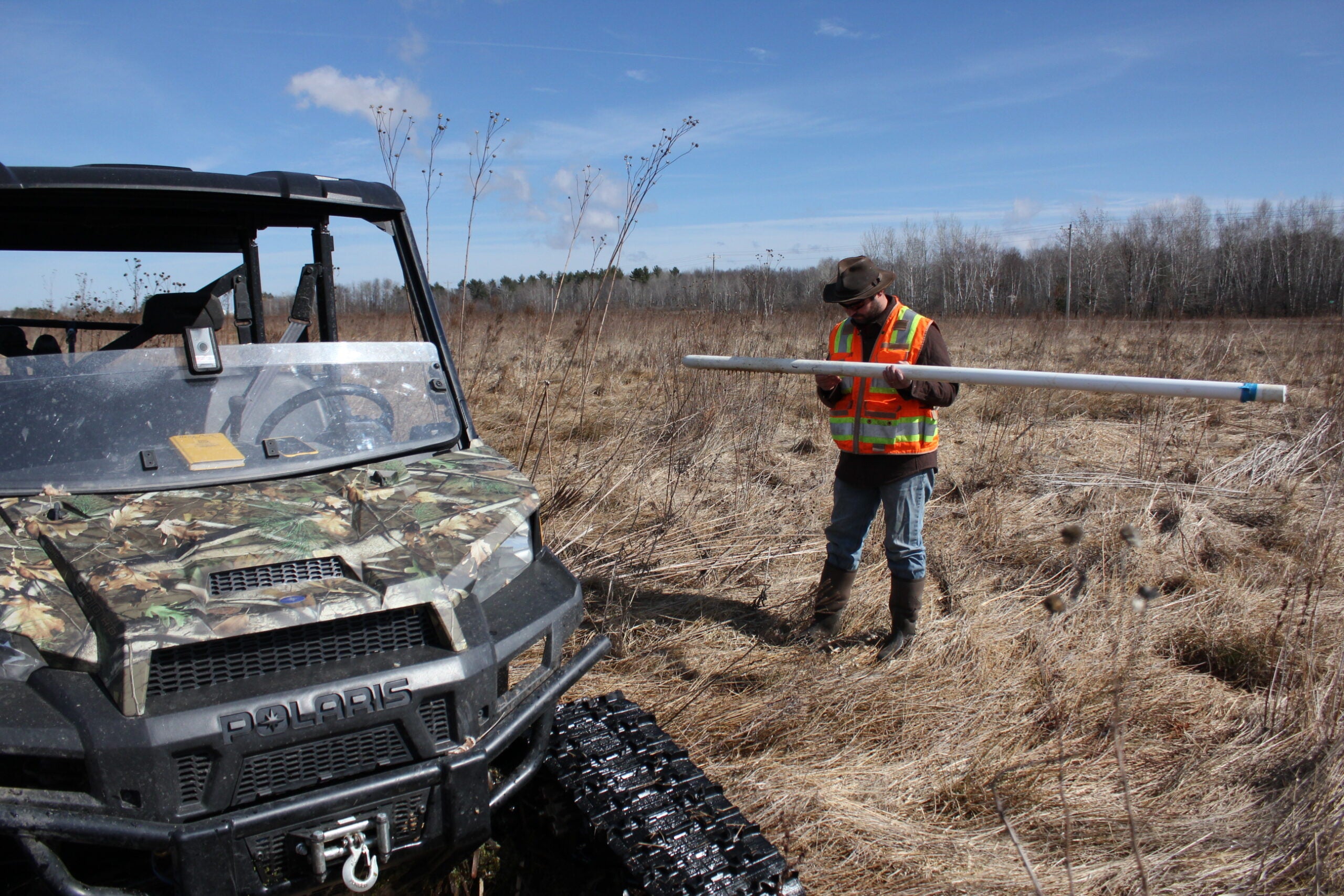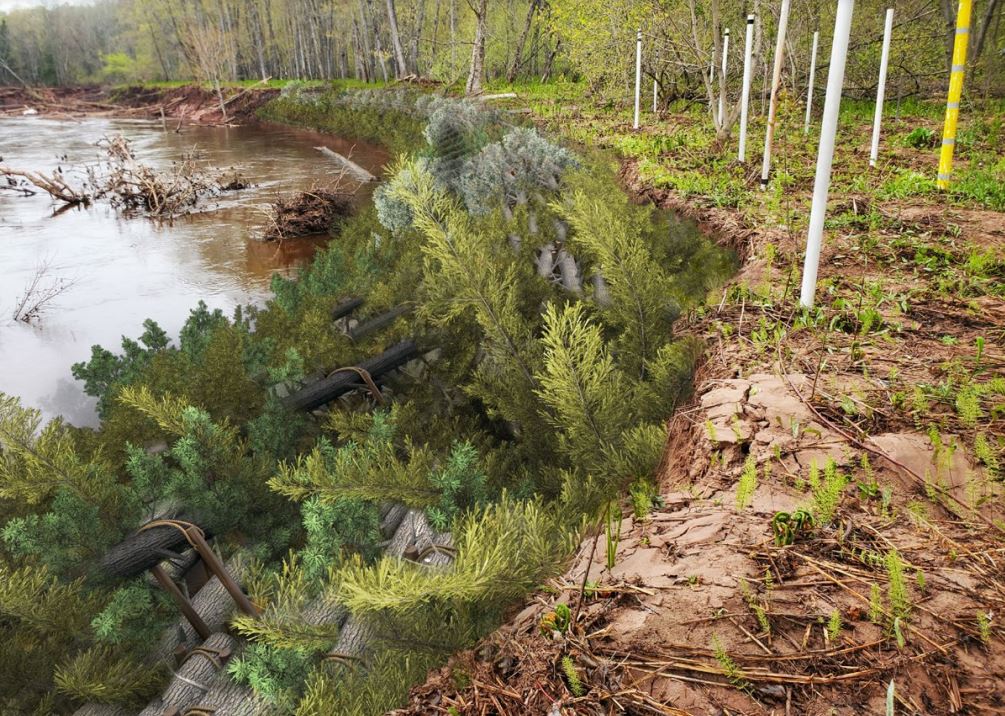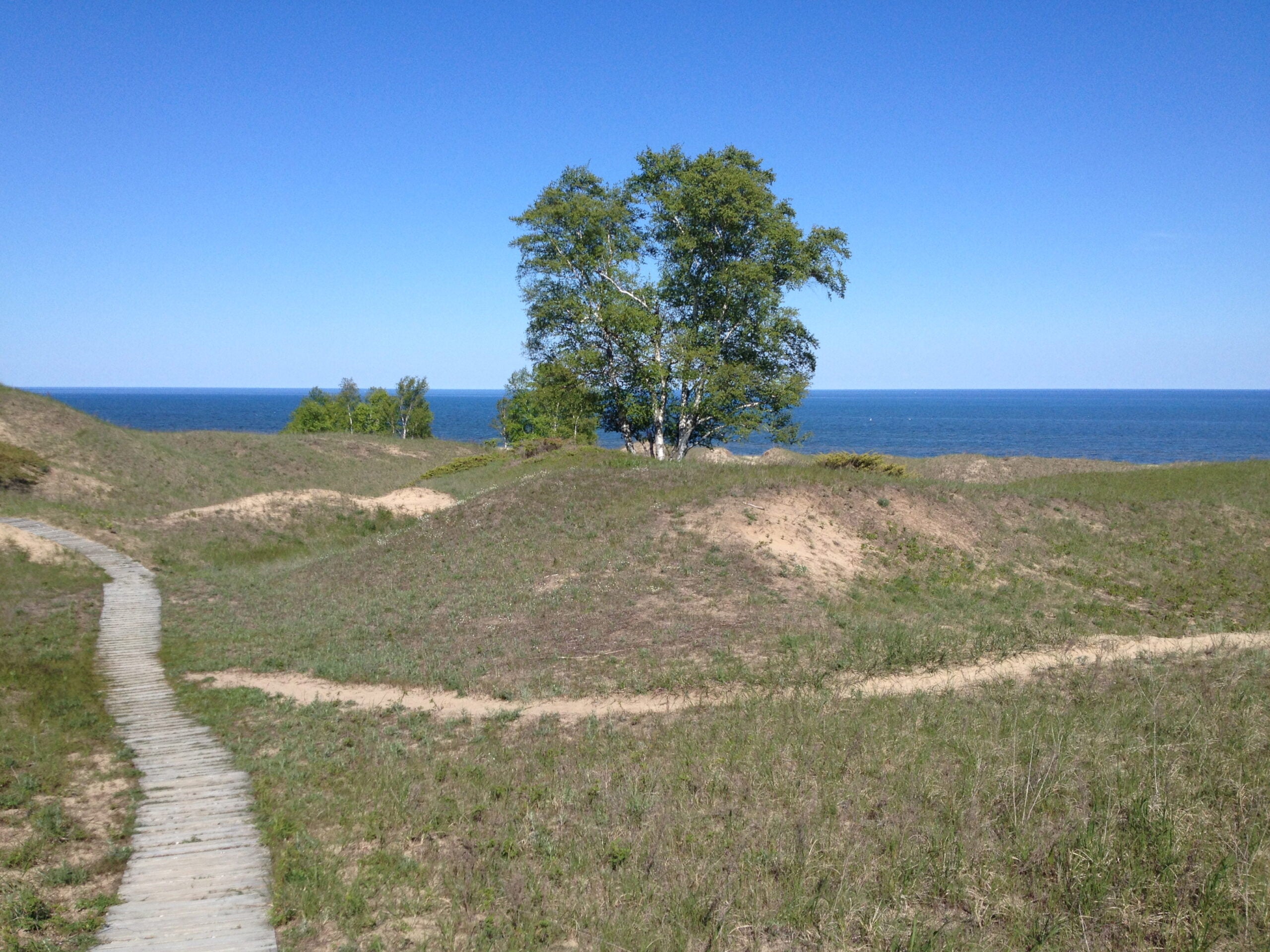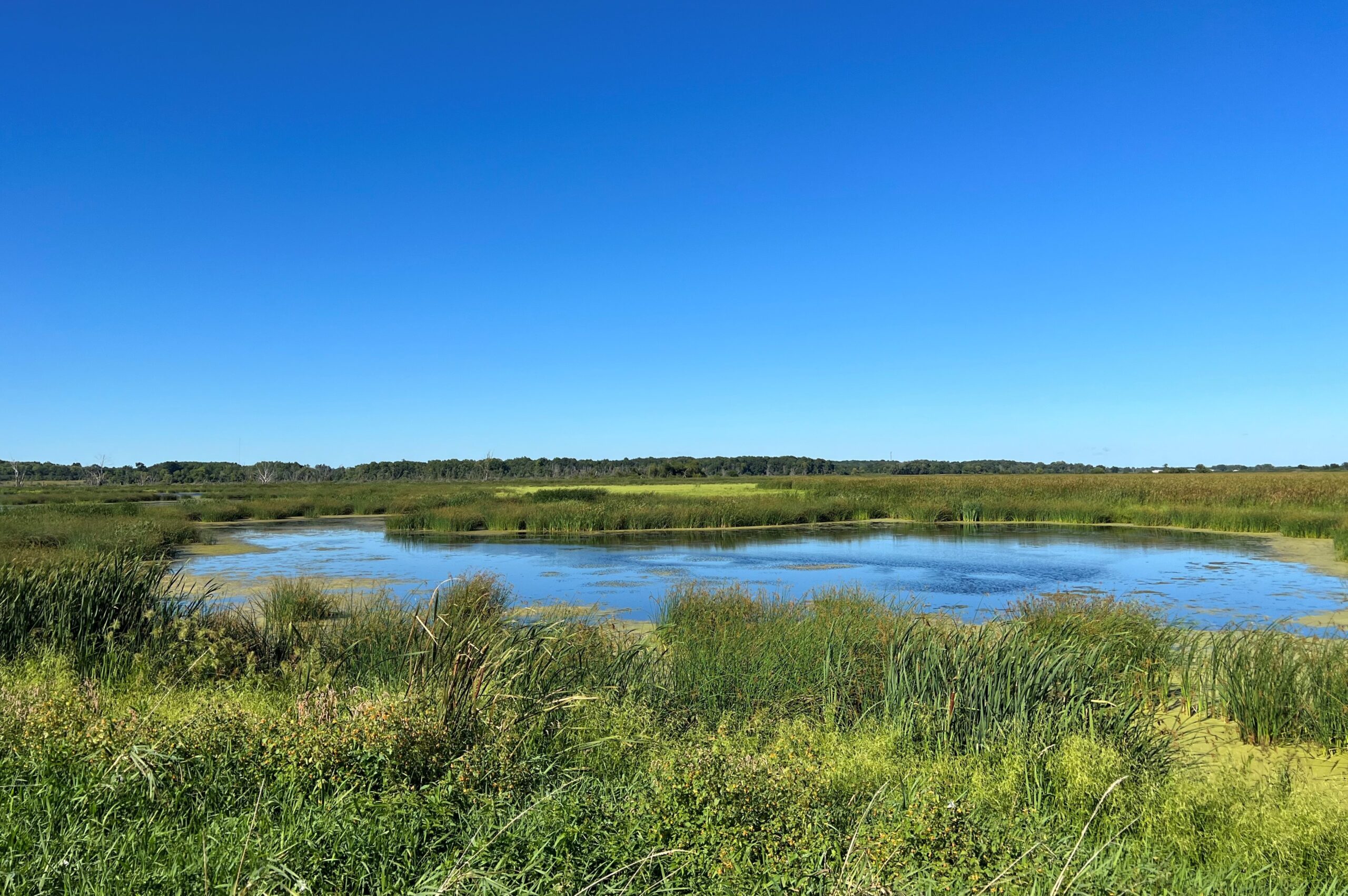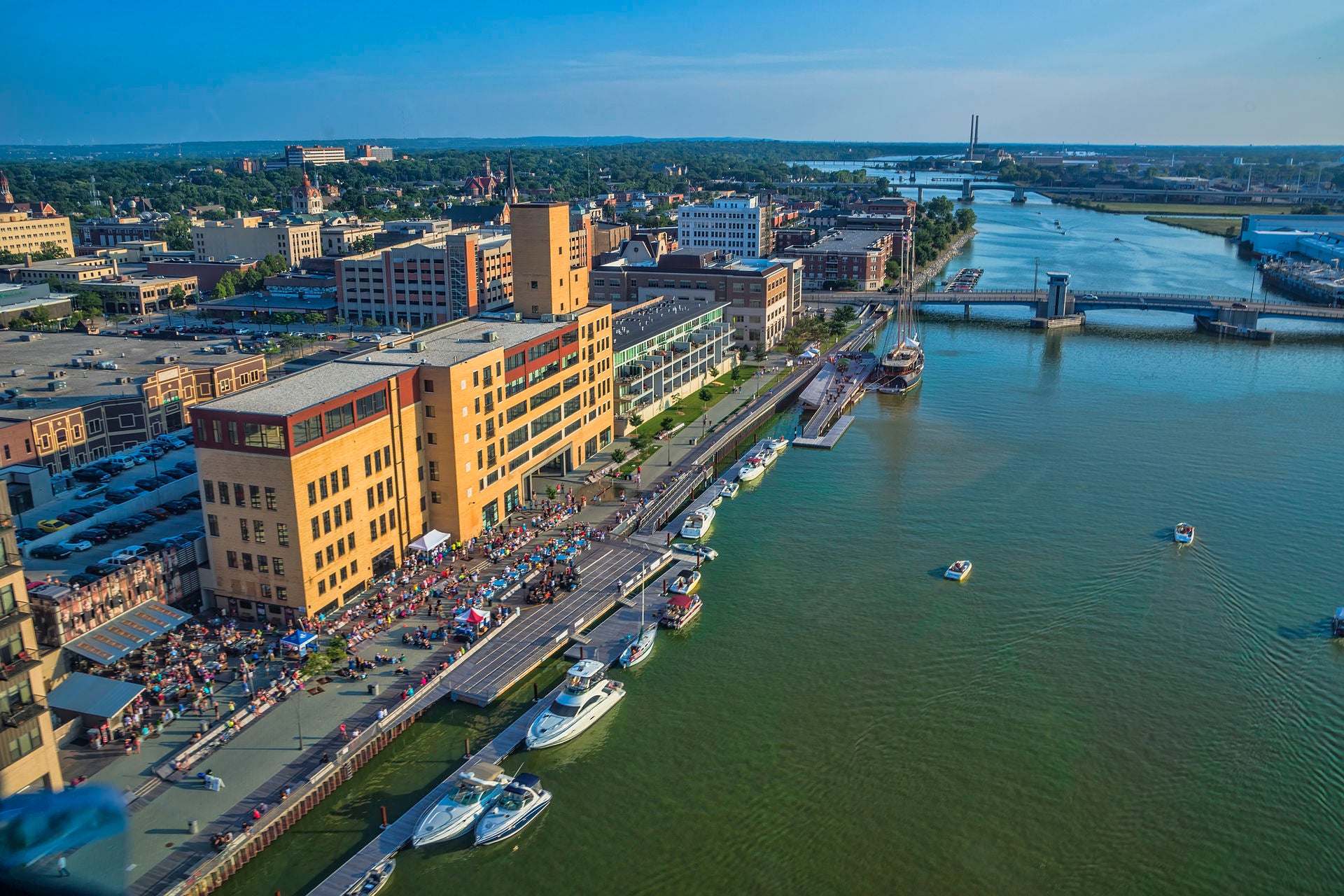Wetlands and business have long been at odds with one another. As industry, housing and agriculture expand, there is pressure to fill swamps, marshes and bogs.
But there are a growing number of companies whose business is restoring wetlands in Wisconsin to make up for what’s been lost.
Just outside of Cornell in Chippewa County lies a 100-acre, rectangular wetland called Foggy Acres. In early spring, the green shoots of native plants are just starting to emerge from the water and dark black soil while dozens of ducks and a pair of sandhill cranes chatter in the background.
Stay informed on the latest news
Sign up for WPR’s email newsletter.
It doesn’t look it, but this wetland was a farm field just seven years ago. And beyond the physical transformation, it’s also now a business known as a wetland mitigation bank.
Foggy Acres wetland mitigation bank near Cornell, Wisconsin, which is owned by Wisconsin Wetlands.Rich Kremer/WPR
With approval from the U.S. Army Corps of Engineers and Wisconsin Department of Natural Resources, mitigation banks sell credits to anyone seeking to fill wetlands in other areas for new construction.
The idea is that the restoration of one wetland can make up for the destruction of another. But for DNR waterway and wetland section chief Martye Griffin it’s more complicated than a one-for-one trade.
“We’re really going for a net-neutral situation because the reality is that even the lowest quality wetland has functions and values on the landscape that you just can’t capture with a restored or enhanced or created wetland but you get much closer to getting that equal offset,” Griffin said.
Wetland mitigation banks have been around for decades in Wisconsin. But in 2008 the Army Corps finalized a rule requiring it and in 2012 Wisconsin began requiring mitigation for businesses that filled more than 10,000 square feet of wetland during construction.
This led to a surge in private wetland mitigation banks like Foggy Acres because there was money to be made.
According to experts in the field, wetland credits can cost upwards of $70,000 apiece.
Nick Haus, a project manager for Wisconsin Wetlands, which owns the mitigation bank near Cornell, said the company’s credits are worth between $40,000 and $60,000 each.
However, that doesn’t mean it’s a get rich quick scheme, Haus said.
“This isn’t something that any old person is going to get to,” Haus said. “The number one impediment to starting a mitigation bank is it’s incredibly expensive up front. You need performance bonds that can be upwards of a half a million dollars just to get the mitigation banking instrument and the compensation site plan signed off.”
There are 13 private, commercial wetland mitigation banks in Wisconsin, but that’s not enough. In fast growing regions like the Fox Valley and Milwaukee Suburbs, mitigation credits are sold out.
So in 2012 the state Legislature ordered the DNR to create what’s called an in-lieu fee program. The DNR’s Griffin said it sells wetland credits but restoration work comes later.
“And instead of having pre-established banks on the landscape or wetland restoration areas, basically you pay into a conservation fund, which then the department puts out requests for proposals to fund projects in the watershed to offset those losses,” Griffin said.
So far the DNR has sold more than $15 million in wetland credits through the in-lieu fee program but wetland restoration has yet to begin. The state is in the final stages of getting federal approval for five projects the DNR hopes to begin this fall.
But the overall question is does creating or restoring one wetland offset the destruction of another? The Army Corps and DNR monitor wetland mitigation banks for five to 10 years and enforce strict standards for hydrology and biological diversity.
But many states, including Wisconsin, have seen wetland banks struggle with invasive plants after monitoring is over.
Nick Haus, project manager for Wisconsin Wetlands, checks to see if there’s any presence of Reed Canary Grass, an invasive plant that crowds out native species in wetlands.Rich Kremer/WPR
Mitigation bank sponsors and regulators say if it’s done right, that net-neutral goal can be reached. But Joy Zedler, the Aldo Leopold chair of restoration ecology at the University of Wisconsin-Madison, said research published in 2016 suggests that restored wetlands only offer half of the abundance and one-third of the diversity that natural, mostly undisturbed wetlands offer.
“So, wetlands are super important and they should be held on a very high pinnacle before we decide to go and damage them,” Zedler said. “It’s not just like taking an alfalfa field and turning it into a prairie. Prairies are far easier to restore and they don’t have the flood protection services or the denitrification service.”
Wetland mitigation is a learning process for everyone involved but it’s also a political issue. And after President Donald Trump signed an executive order in February repealing a Clean Water Rule signed during the Obama administration, many are wondering whether requirements to restore wetlands will be around much longer. Haus said if mitigation requirements disappear, so do mitigation banks like Foggy Acres.
“A lot of this is predicated off of the Clean Water Act and to a lesser extent in Wisconsin, the Clean Water Rule, that just had an executive order to be removed,” Haus said. “If the regulations that were put in place to make all this happen disappeared all the investments in the land, the resources, the soil augers, the seed, the monitoring wells … all of that would be for naught.”
WPR’s Rich Kremer talks about how wetlands could be impacted by the forthcoming Foxconn LCD screen plant in Racine County.
This story is part of a yearlong reporting project at WPR called State of Change: Water, Food, and the Future of Wisconsin. Find stories on Morning Edition, All Things Considered, The Ideas Network and online.
Wisconsin Public Radio, © Copyright 2024, Board of Regents of the University of Wisconsin System and Wisconsin Educational Communications Board.

